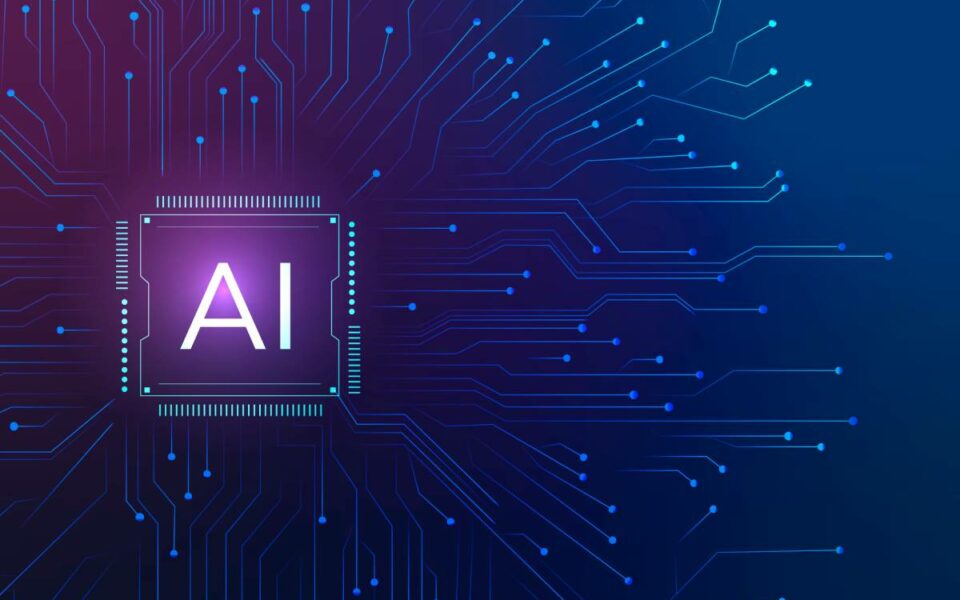
RAG 2.0 and Vector Databases: The New Standard for Enterprise AI
24 October 2025
Vibe Coding vs. Traditional Coding: Technical Comparison of Workflow, Speed, and Output
30 October 2025
Introduction
Enterprises across industries are racing to integrate AI into their operations, but progress is often slowed by two recurring problems: lack of high-quality training data and the risk of experimenting in production environments. This is where the combination of synthetic data and digital twins is becoming transformative. Synthetic data can fill gaps in real-world datasets while preserving privacy, and digital twins create safe, dynamic environments for testing “what-if” scenarios without disrupting live systems.
Analysts already note that more than 70% of large enterprises are investing in digital twin initiatives, often pairing them with AI to accelerate decision-making and reduce costs. Synthetic data complements this shift by making twins richer, safer, and more representative, enabling experimentation at scale. Together, they form a powerful duo that is reshaping enterprise AI strategy.
What Are Synthetic Data and Digital Twins?
Synthetic data are artificially generated datasets that replicate the statistical properties of real-world data without exposing sensitive information. They can be created using different methods:
- Generative models such as GANs or diffusion networks, which learn distributions and create realistic samples.
- Rule-based generation, where domain expertise guides the creation of edge cases or rare conditions.
- Agent-based simulation, where synthetic actors interact in controlled environments to create realistic event logs.
Synthetic data are used to cover rare events, reduce bias in datasets, and protect privacy when working with regulated information such as patient records or financial transactions.
Digital twins are dynamic, digital replicas of assets, processes, systems, or even entire organizations. They continuously ingest data from sensors, logs, or APIs and allow simulations to be run safely. There are different types:
- Asset twins (a single machine or device),
- Process twins (a production line or workflow),
- System twins (a factory, supply chain, or city),
- Human or organizational twins (representing user behavior or workforce dynamics).
Where synthetic data create the “fuel,” digital twins provide the “engine” for experimentation and prediction.
Reference Architectures: Three Proven Patterns
1. Synthetic-First Prototyping
Organizations start by generating synthetic datasets to simulate conditions they cannot easily observe in real life. For example, a bank may generate synthetic transaction logs containing rare patterns of fraud. These datasets feed a digital twin of its fraud-detection system, allowing safe stress-testing of new algorithms. Once the prototype performs well, it can be validated and calibrated on real-world data.
2. Hybrid Learning Loop
Here, real-world data streams into a twin continuously, while synthetic data fill the gaps. Consider a factory twin that monitors a production line: common machine failures are captured live, but rare breakdowns are introduced synthetically to test the robustness of predictive models. The hybrid loop ensures broader coverage and continuous learning.
3. Agentic Scenario Generation
This cutting-edge pattern uses generative AI agents to create scenarios that are then run in the digital twin. For example, in urban mobility, an AI agent can design traffic disruption scenarios (accidents, weather events, construction), while the twin simulates their impact on traffic flows. Synthetic data generated from these scenarios enriches training datasets for traffic management AI systems.
The Metrics That Matter (Quality, Privacy, Utility)
For enterprises, the value of synthetic data and digital twins must be measurable. Key metrics include:
- Fidelity and coverage: How closely synthetic data replicate the statistical distribution of real-world data. Measures include divergence metrics and feature overlap.
- Utility: How models trained on synthetic or hybrid datasets perform compared to those trained solely on real data. Metrics such as changes in accuracy, AUC, or RMSE help quantify value.
- Privacy: The ability to ensure that no synthetic record can be traced back to an individual. Techniques like membership inference testing and differential privacy can provide guarantees.
- Twin validation: Accuracy of simulations against real-world benchmarks, sensitivity analyses for “what-if” scenarios, and monitoring for drift as environments evolve.
Tracking these metrics ensures that synthetic data and twins add measurable value rather than introducing hidden risks.
Governance and Compliance by Design
As both synthetic data and digital twins touch sensitive domains, governance is essential.
- Privacy impact assessments (PIA/DPIA): required in many jurisdictions before deploying synthetic datasets that derive from personal information.
- Audit trails: every synthetic dataset and twin scenario should be versioned and logged, ensuring reproducibility of experiments.
- Access control: clear role separation between data engineers, domain experts, and AI modelers, ensuring sensitive workflows are not compromised.
- Responsible AI alignment: documenting assumptions, testing for bias, and validating explainability of outcomes produced in twin simulations.
By building governance into the pipeline, enterprises ensure regulatory compliance (e.g., GDPR, EU AI Act) while strengthening trust in their AI outputs.
TCO and ROI: Building the Business Case
Synthetic data and digital twins require investment, but they also reduce costs and risks.
Cost components: compute resources for data generation, storage, twin orchestration platforms, and validation pipelines.
Return components: reduced need for costly real-world data collection, faster time-to-experiment, lower production risk, and improved decision-making accuracy.
For instance, an automotive manufacturer may avoid millions in warranty claims by identifying design flaws earlier in a digital twin of its engine, trained partly on synthetic failure cases. The ROI is not just financial but also reputational, as safer products reach the market faster.
Mini-Case Studies Across Industries
- Life Sciences: Researchers create synthetic “patients” with varied medical histories to test treatments in a digital twin of a clinical trial. This reduces privacy risk and accelerates trial design.
- Manufacturing: A digital twin of a production line uses synthetic fault data to train predictive maintenance algorithms, reducing downtime and improving OEE (overall equipment effectiveness).
- Smart Cities: Digital twins of urban mobility simulate disruptions like accidents or weather extremes, using synthetic edge-case data to improve traffic models and emergency response strategies.
- Marketing and CPG: Brands run audience simulations with synthetic consumer data to test campaigns without relying on sensitive first-party information. This accelerates iteration while maintaining compliance.
These examples illustrate how the pairing of synthetic data and twins works across very different domains, always with the same goals: safer experimentation, richer scenarios, and better outcomes.
Tooling and Technology Stack
The stack typically involves three layers:
- Data generation: GANs and diffusion models for realistic samples, rule-based generators for rare edge cases, and agent-based simulations for behavioral data.
- Orchestration: pipelines for dataset versioning, contracts, and integration with existing MLOps platforms.
- Twin engines: specialized simulation platforms (engineering, IoT, or urban planning) enhanced with LLMs as natural-language interfaces for querying and scenario generation.
This combination enables enterprises to manage the entire lifecycle: from synthetic data creation, through twin calibration, to deployment in AI-driven decision-making.
Common Pitfalls and How to Avoid Them
- Synthetic-only reliance: without calibration on real data, models may generalize poorly. Always validate with hybrid datasets.
- Privacy complacency: synthetic does not automatically mean safe. Rigorous privacy testing is required.
- Versioning chaos: without proper logging of dataset versions, twin scenarios, and generators, results may be irreproducible.
- Hallucinated scenarios: AI agents may generate unrealistic edge cases; human-in-the-loop review is essential.
Avoiding these pitfalls ensures synthetic data and twins deliver reliable, actionable insights.
Outlook 2025–2027
The next three years will see rapid convergence of synthetic data and digital twin technologies:
- Generative AI interfaces: LLMs will increasingly act as front-ends for twins, generating scenarios and answering queries in natural language.
- Standardized governance: frameworks for synthetic data validation and twin auditability will emerge, aligning with global Responsible AI standards.
- Platformization: digital twin + synthetic data will evolve from proof-of-concept projects into integrated enterprise platforms.
- Sustainability: twins will be used to simulate climate and resource impacts, with synthetic data filling gaps in environmental datasets.
Enterprises that build capabilities now will be ahead of the curve, able to innovate faster, comply with regulations, and unlock new business models.
Conclusion
Synthetic data and digital twins are no longer experimental technologies. Together, they form a powerful playbook for enterprise AI – one that accelerates innovation, reduces risk, and ensures privacy and compliance. Synthetic data provides diversity and safety, while digital twins offer dynamic, real-world context for testing and validation.
Organizations that adopt this pairing are better positioned to handle data scarcity, regulatory scrutiny, and the need for fast experimentation. More importantly, they gain the ability to model the future, not just react to the present – a decisive advantage in the age of AI.


